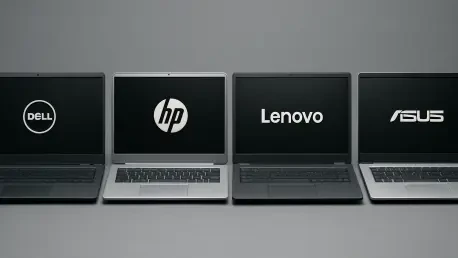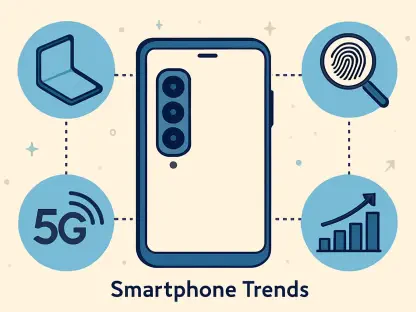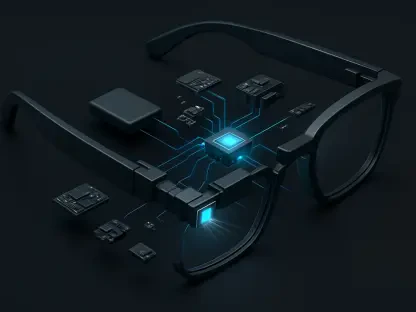Today, we’re thrilled to sit down with Nia Christair, a renowned expert in mobile technology, who’s recently expanded her insights into the broader tech landscape, including PC hardware and branding. With a background in mobile gaming, app development, device design, and enterprise solutions, Nia brings a unique perspective to the ever-evolving world of personal computing. In this interview, we dive into the shifting dynamics of the PC market, explore what makes certain brands stand out, and unpack the critical factors behind ranking major players in the industry. From build quality to innovation, pricing strategies to customer support, Nia shares her expert take on what consumers should know when choosing their next device.
How has the PC market evolved over the past few years from your perspective as a tech expert?
Over the past five years, the PC market has seen some dramatic shifts, largely driven by consumer demand for versatility and performance. We’ve witnessed a surge in thinner, lighter laptops—think designs like ultraportables that prioritize mobility without sacrificing power. At the same time, gaming laptops have become beasts of their own, with brands pushing boundaries on specs and cooling systems to cater to a growing esports and enthusiast crowd. There’s also been a noticeable pivot toward hybrid devices, like 2-in-1s, reflecting how people now blend work and personal use. I think this evolution mirrors broader tech trends I’ve seen in mobile—users want devices that adapt to their lifestyles, whether that’s a featherweight laptop for travel or a powerhouse for gaming.
What do you consider the most crucial factors when evaluating and ranking PC brands today?
When I look at ranking PC brands, it’s really about a holistic view of what they bring to the table. Build quality is non-negotiable—how durable and well-designed is the hardware? Pricing also weighs heavily; it’s not just about the sticker price but the value you’re getting for it. I also factor in the range of products a brand offers—do they cater to budget buyers, professionals, and gamers alike? Customer support is another big piece of the puzzle; a great device means little if you’re left hanging when something goes wrong. Lastly, availability matters. If a brand’s products are hard to find or take forever to ship, that’s a real drawback for consumers who need solutions now.
Let’s talk about Lenovo, often seen as a leader in the PC space. What is it about their approach that sets them apart in your eyes?
Lenovo’s strength lies in their incredible variety. They’ve got something for everyone—budget-friendly Chromebooks, business-oriented ThinkPads with that iconic design, and solid gaming options like the Legion lineup. Their ability to cover so many bases gives them an edge over brands with narrower focuses. I also appreciate how they balance innovation with accessibility; they’re not just chasing high-end markets but also ensuring there are entry-level options. That said, their pricing strategy can be a bit of a game—they often list higher original prices to make discounts look more appealing. Still, when you cut through that, their discounted prices are often competitive, and their availability is top-notch.
Dell and Alienware are also highly regarded, especially for gaming and business solutions. How do you think they differentiate themselves in a crowded market?
Dell, especially with Alienware under their umbrella, stands out by mastering both ends of the spectrum—business and gaming. Their XPS series is a direct competitor to premium ultrabooks, offering sleek designs and powerful specs for professionals. On the gaming side, Alienware and lines like the G15 and G16 deliver serious performance at prices that often beat out competitors for similar hardware. What I also find compelling is Dell’s willingness to cater to niche audiences, like offering Ubuntu pre-installed for Linux users. Their frequent deals and discounts are a big draw too; they genuinely make high-end tech more accessible if you time your purchase right.
HP holds a strong position as well, though not quite at the top. What’s holding them back from dominating the market, in your opinion?
HP has a lot going for it—solid build quality, a decent range of products from business-focused Pavilions to gaming rigs like Omen and Victus. But they fall short compared to Lenovo or Dell in terms of sheer breadth and availability. They don’t always have the same depth of configurations or innovative edge in their lineups. Their gaming options are good but not always as cutting-edge or value-driven as others. Plus, I’ve noticed some of their lower-end models can be underwhelming—there are certain budget laptops I’d caution against because they skimp on power for the price. They’re reliable, but they’re not pushing the envelope as aggressively as the top contenders.
Acer often gets attention for budget-friendly options. Why do you think they appeal to a specific segment of buyers?
Acer nails the budget-to-mid-range market, which is a huge segment of buyers who want dependable tech without breaking the bank. Their Nitro V, for instance, is a fantastic entry-level gaming laptop that often undercuts competitors on price while still delivering playable performance. The Aspire line is another example—nothing flashy, just solid, customizable laptops for everyday use. They also offer practical options like the Swift for lightweight needs and Travelmate for business users. Acer’s focus isn’t on premium or luxury; it’s on accessibility and value, and that resonates with students, small businesses, and anyone prioritizing cost over brand prestige.
Gaming-focused brands like Asus and Razer have carved out their own niches. How do you see their role in the broader PC landscape?
Asus and Razer are powerhouses in the gaming niche, and they play a vital role by pushing the boundaries of what laptops can do in terms of raw performance and aesthetics. Asus, with its ROG and TUF lines, offers everything from high-end beasts to more affordable gaming rigs, often packed with customizable RGB and top-tier components. Razer, meanwhile, brings a premium vibe with the Blade series—compact, powerful, and integrated into their Chroma ecosystem for that immersive gamer experience. Both brands cater to enthusiasts who prioritize specs over battery life or versatility, though they can come with steeper price tags and spotty customer support at times. They’re not for everyone, but they define what’s possible in gaming hardware.
With brands like Samsung and Microsoft offering more specialized devices, how do you think they fit into the competitive PC market?
Samsung and Microsoft are interesting because they target specific ecosystems and use cases rather than trying to dominate every category. Samsung’s Galaxy Books are perfect for those already invested in their ecosystem, focusing on ultraportable designs with solid build quality, though they lack gaming or desktop options. Microsoft, with its Surface line, aims at premium users who want lightweight, versatile devices—think creatives or professionals needing a MacBook Air alternative. Their offerings are niche, often pricey, and not as widely available, but they excel in design and integration with their respective software environments. They’re not mass-market players, but they fill important gaps for certain consumers.
What’s your forecast for the future of the PC market over the next few years?
I see the PC market continuing to evolve toward even greater specialization and integration. We’ll likely see more hybrid devices that blur the lines between laptops, tablets, and even mobile tech, as consumers demand seamless experiences across platforms. Gaming hardware will keep pushing performance limits, especially with advancements in cooling and portable power. I also expect sustainability to become a bigger focus—brands will face pressure to use recyclable materials and design for longevity. On the software side, integration with AI and cloud services will deepen, making PCs more like hubs for broader digital ecosystems. It’s an exciting time, and I think the brands that adapt to these trends while keeping affordability and user needs in mind will lead the pack.









